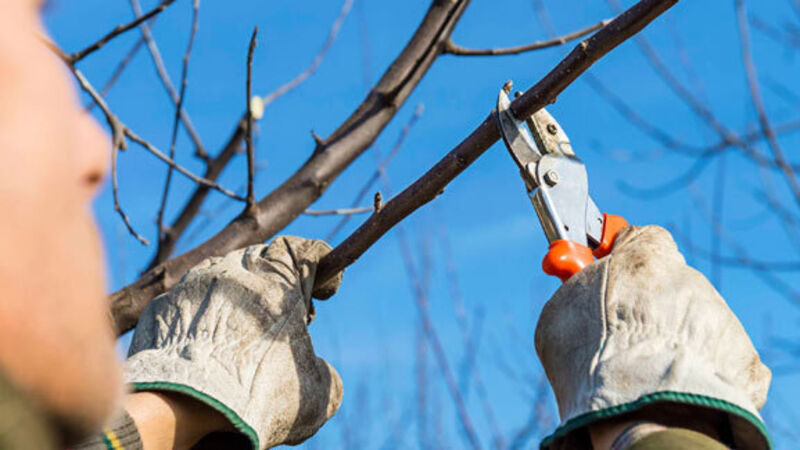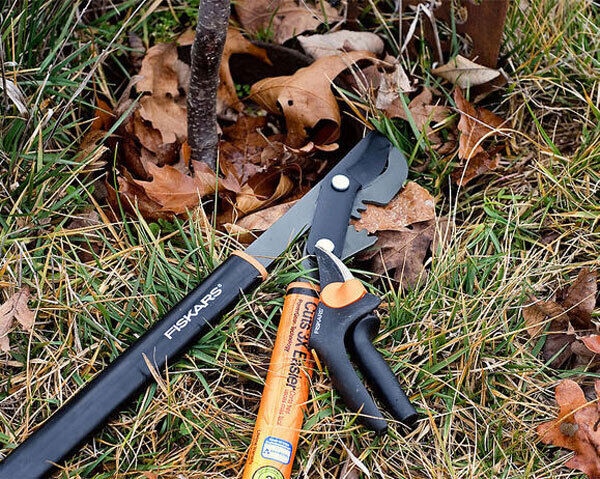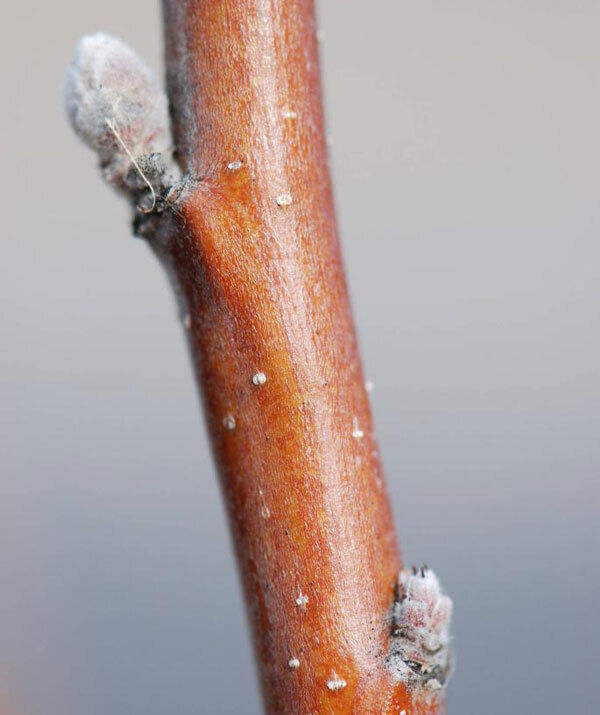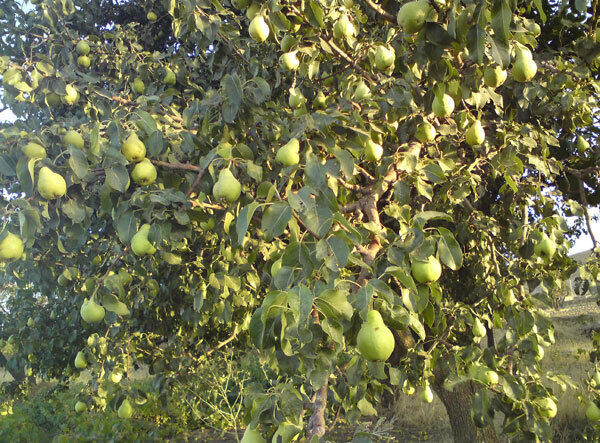This is the perfect moment to prune apples and pears

Fruit pruning shouldn’t be a daunting task, it is the means of a more productive crop next year and so should be enjoyable— but many pundits and garden manuals make it look like rocket science.
There are enough stresses in life. So here is my paper plane version. Apples and pears can be grown as bushes (and we can include in that espalier, fan-trained, step-over) or as standard trees.
In that array you may be pruning or just nipping here and there, across the year to keep a tidy shape. That’s fine. But like everything, there is a season.
The season to prune for productivity is commencing now. Depending on where you are, your fruit trees may be shedding foliage or are already nude.
Once the last of the leaves are off, the active growth has halted and the tree/bush won’t mistake your pruning cuts as cues to grow more lateral shoots.
Pruning back in September would launch your specimens into rejuvenation and all that spent energy would come to nothing as the newly-arrived winter chill stills all activity.
The trees that shed foliage do so to save energy for winter. Making them expend energy on growth at the wrong time just weakens them and wastes your time.

Fold no 1
So we do not have to get out the astrological charts, runes, abacuses or algebraic formula to ascertain the opportune moment — simply, when the leaves are gone the tree is dormant enough to be efficiently pruned.
So before we get to fruiting spurs we can look at shape – you may need to lop off some of the recent growth to maintain the integrity of an espalier or fan or you may have a tree that’s become a bit of a monster of late.
The standard view is to not to remove more than 20% of the total canopy in any one winter. In part, that’s because a serious haircut can trigger even more serious growth surges come spring. It’s also an eye on the wisdom that less cuts equal less chance of possible infection (more on that to come).
If you inherited a monster or have an old one slowing its production and stunted, you can take 10%-15% now, and same again next winter. Bear in mind while you go at it, fruiting wood, for the most part, is branches/stems one to four years old, so if you remove all of that, expect to not crop for a year or two.
Fold no 2
A tidy up is part of the process but don’t fill a skip bag. It is okay if shapely takes more than one season to achieve.
Fold no 3
Don’t make the mistake of taking out the majority of the fruiting wood – leave branches that are one to four years old to bear fruiting spurs and plenty of fruit next year.

The tidy up will open the tree/bush which is of immense benefit – it allows more sunlight and air into the canopy/plant.
The extra circulating air discourages diseases (of branch, leaf and fruit), and the extra light come next spring will help energize new shoots and ripen your fruit to perfection.
So with an open canopy or a shaped/ trained specimen, now start some surgical pruning. Simply remove dead and diseased limbs/stems.
Lichen-covered branches are not unhealthy branches. Fungi, rot, dieback and dry, crumbling or sunken patches (canker) are the main concerns. You can take out crossing branches that may rub against each other and cause friction wounds that could let disease take control.
A sharp pair of clean secateurs and a quality pruning saw will be required — that rusty saw somewhere in the garage is best left there.
Maybe I’ve seen too many gangster movies as a child — but I splash a bit of whiskey on my pruning saw and secateurs before I start. It has served me and my trees well. You could use thyme or chamomile essential oil or even some under the sink disinfectant, or if you are a regular cleaner of your tools, just a touch of boiling water.
I generally make all the healthy cuts first then do the unhealthy wood, then clean the tools again before putting them away, before going back in to do select pruning — for fruiting spurs etc. With clean and sharp tools there is no need to use pruning paint or wound grease/plaster on apples and pears, the jury is out on how helpful that practice is anyway. The extra air and blast of the sunshine should heal up the wound naturally.
Fold no 4
Be surgical with damaged, diseased or dead stems, amputate and use sharp clean tools.

When it comes to fruiting spurs — the buds that will go on to develop flowers and thus fruits — November is the best time to identify them on your tree. Fruit buds can start to form up from mid-summer, but they are very noticeable now.
To cut to the basics, all fruit trees produce two types of buds: growth buds (aka wood buds) which will develop into a new shoot that bears leaves but no flowers and also fruit buds (aka fruiting spurs) that contain the DNA for new flowers and once blossomed and pollinated will form fruit.
When it comes to telling the difference — no vision quests or microscopes needed — they are easily distinguished:
*Fruiting spurs are identifiable as a plumpish
round bud and if we look closely or feel, we can note that the bud scales are also typically downy.
*Growth buds are differentiated by being smaller, slender and pointed.
Fold no 5
Skinny pointed buds are foliage to come. Plump round buds are fruits to come. You will never rub out the wrong one again. We are good to go to fly this plane.
I would just like to note a bit of botany that may be useful if you want to have espaliers and fan trained fruits rather than a specimen tree or a mini orchard.
Selecting varieties for where the fruiting bud forms is something to put on your research radar or ask before you purchase. Apple and pear cultivars fall into three ‘where’ groups — spur-bearers, tip-bearers and partial tip-bearers.
The majority, but not all pear and apple cultivars in Irish garden centres and mail order are spur bearing — which are the best for training.
It is just that tip and partial tip bearers will lose yield upon being shaped as you are cutting off where the fruit forms.
Some heritage forms like ‘Irish Peach’ are tip, while ‘Bramley’ is partial tip. If you want a specific variety it is best to know where/how it fruits so you can make that vital decision of what way to cultivate it.
Fold no 6
Identifying your fruiting spurs is the key to how and where, you can grow, to pruning success and also to bumper crops.
That’s it — it’s that simple.
The hard part with apples and pears is waiting for the pie to cool or the perry/cider to mature. Getting it right this month sets you up for bounty next year.









